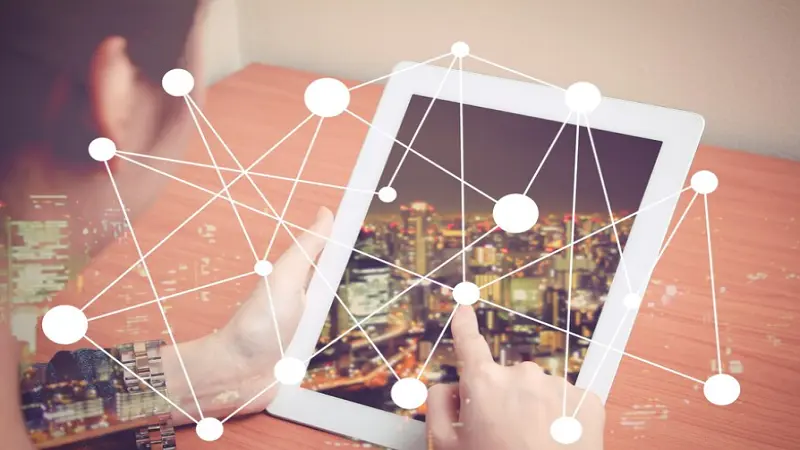The Internet of Things (IoT) is revolutionizing the way devices interact, transforming industries and enhancing everyday life. From smart homes to industrial automation, IoT enables real-time connectivity between devices and systems. Yet, as the number of connected devices skyrockets, so does the need for a unified framework of Connecting The Dots: Unraveling Iot Standards And Protocols that guide how these devices communicate, share data, and ensure security. In this article, we’ll break down IoT standards and protocols, explain their significance, and explore the complexities they present for IoT’s future.
Understanding IoT and Its Importance
IoT represents a vast network of interconnected devices that exchange data, enabling them to “talk” to each other without human intervention. These connections allow for innovations across fields like healthcare, manufacturing, transportation, and smart city development. But as more devices join the IoT landscape, the lack of unified communication standards creates challenges, affecting reliability, security, and scalability. This is where Connecting The Dots: Unraveling Iot Standards And Protocols play an essential role, acting as a blueprint for seamless connectivity.
The Role of Connecting The Dots: Unraveling Iot Standards And Protocols
Connecting The Dots: Unraveling Iot Standards And Protocols determine how devices transmit data across networks, ensuring consistent performance and interoperability. Standards set guidelines for device design, while protocols define the rules that enable devices to communicate, exchange information, and perform tasks effectively.
Without these frameworks, IoT devices could face compatibility issues, resulting in unreliable connections, increased security vulnerabilities, and difficulties in scaling up IoT ecosystems. Thus, having a common set of standards and protocols is essential to an efficient, secure, and cohesive IoT system.
Types of IoT Protocols
IoT protocols are categorized based on their purpose in the communication stack. Here’s a closer look at the layers:
1. Application Layer Protocols
Application layer protocols handle data formats, user interfaces, and the overall “communication” language for applications. They determine how data is sent and received, focusing on user-centered communication.
2. Network Layer Protocols
Network layer protocols manage the routing and forwarding of data packets, making it possible for data to move across various IoT networks.
3. Data Link and Physical Layer Protocols
Data link and physical layer protocols manage the physical aspects of communication, including hardware-based signals and device-to-device connections.
Key IoT Protocols Explained
Each IoT protocol has distinct characteristics tailored to different requirements, from low-latency to high-security applications. Here’s a breakdown of some of the most widely used IoT protocols:
MQTT (Message Queuing Telemetry Transport)
MQTT is a lightweight messaging protocol optimized for devices with limited resources, ideal for applications requiring low bandwidth, such as sensor networks. It follows a publish-subscribe model, where devices (publishers) send data to a server (broker), and other devices (subscribers) receive relevant data based on subscriptions. MQTT’s simplicity and efficiency make it popular in applications like industrial IoT and remote monitoring.
CoAP (Constrained Application Protocol)
CoAP is designed for devices with limited processing capabilities, operating over UDP for faster communication. It enables devices to request data from servers and receive responses, making it suitable for constrained environments like smart home devices or sensor networks. With its focus on minimal overhead, CoAP provides efficient, lightweight messaging tailored to low-power IoT networks.
AMQP (Advanced Message Queuing Protocol)
AMQP is a protocol designed for high-reliability applications, enabling secure, message-oriented communication. It supports messaging and queuing, making it useful in enterprise-level applications that require secure, guaranteed message delivery, such as finance or logistics. Connecting The Dots: Unraveling Iot Standards And Protocols
HTTP/HTTPS (Hypertext Transfer Protocol/Secure)
HTTP and HTTPS are protocols originally developed for the web, widely adopted in IoT due to their familiarity and support for RESTful APIs. They are best suited for applications where security is crucial, as HTTPS ensures data encryption. However, they are not as lightweight as other protocols, making them less ideal for low-power IoT devices but preferred in applications like smart appliances and connected vehicles.
Emerging IoT Standards
The IoT industry continues to grow, and so does the list of emerging standards aiming to unify device communication. Some noteworthy standards include:
- Thread: Thread is an open-source, low-power protocol designed for home automation, supporting secure and scalable mesh networking.
- Zigbee: Zigbee is a widely used standard for low-data-rate, low-power communication in smart home and industrial IoT applications. It offers robust security features and interoperability with other IoT devices.
- Z-Wave: Primarily used in home automation, Z-Wave offers low-power, reliable, and secure communication across connected devices.
These standards aim to address diverse IoT needs, supporting interoperability while catering to power efficiency and secure communication.
The Importance of Interoperability
Interoperability allows devices from different manufacturers to communicate seamlessly, ensuring a cohesive IoT ecosystem. Without it, connecting devices would require complex, proprietary integrations, slowing down IoT adoption and limiting its potential. Standards such as the Open Connectivity Foundation (OCF) and the IEEE’s P2413 standard focus on promoting interoperability across devices and networks. A standardized approach can enhance data sharing, reduce costs, and improve user experience.
Security Standards in IoT
Security is a critical concern in IoT, as interconnected devices increase the attack surface for cyber threats. IoT security standards, such as ISO/IEC 27000 series, NIST IoT Cybersecurity Framework, and ETSI EN 303 645, set guidelines for securing IoT devices against potential threats. These standards encompass areas like data encryption, user authentication, and secure communication protocols.
Following security standards ensures that IoT devices can resist unauthorized access, reducing risks to personal and enterprise data. For industries like healthcare and finance, where data sensitivity is high, these standards provide essential protections.
Challenges in IoT Standardization
The rapid growth of IoT presents challenges to developing a cohesive standardization framework. With multiple industries involved, each with specific requirements, achieving a one-size-fits-all standard is complex. Additionally, IoT protocols must accommodate various device capabilities, from simple sensors to high-power processors, without compromising performance or security.
Interoperability remains a key issue as different protocols and standards coexist, each tailored to specific needs. As more organizations, industries, and manufacturers collaborate, balancing the demand for customization and universal standards will be essential in shaping the future of IoT.
Conclusion
As IoT evolves, Connecting The Dots: Unraveling Iot Standards And Protocols provides a foundation for reliable, scalable, and secure device communication. With protocols like MQTT and CoAP supporting efficient data exchange and emerging standards promoting interoperability, the IoT landscape is on its way to achieving a seamless ecosystem. However, with rapid growth comes the need for stronger security measures, comprehensive standards, and industry collaboration.
IoT’s potential lies in how well these Connecting The Dots: Unraveling Iot Standards And Protocols evolve to support diverse applications. From smart homes to healthcare, as IoT standards align, they will unlock a new wave of innovation, improving convenience, efficiency, and connectivity across every aspect of life. By understanding and supporting the development of IoT standards, industries and consumers alike can look forward to a future where IoT seamlessly integrates with the world around us.




